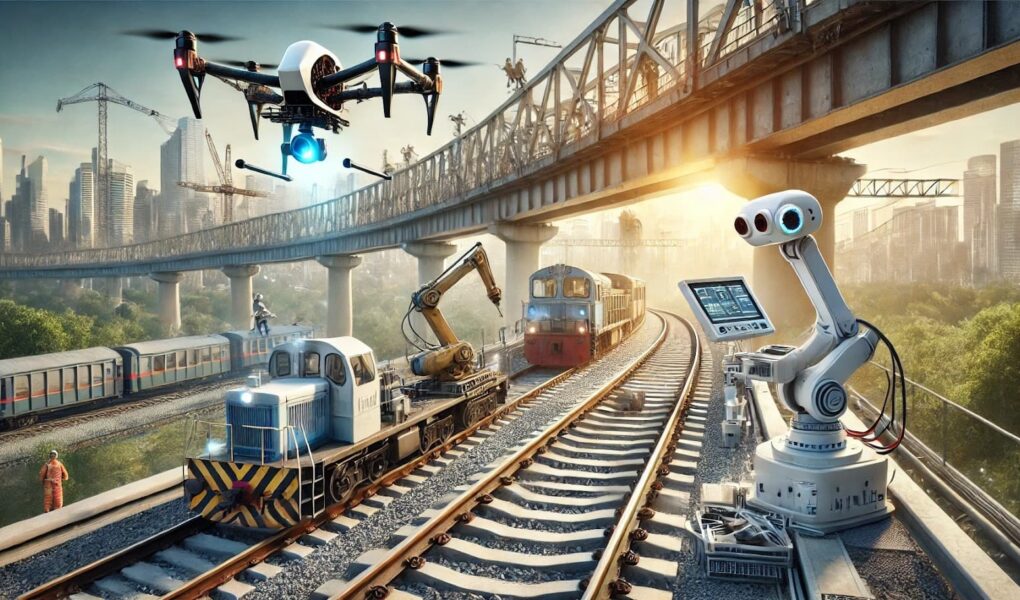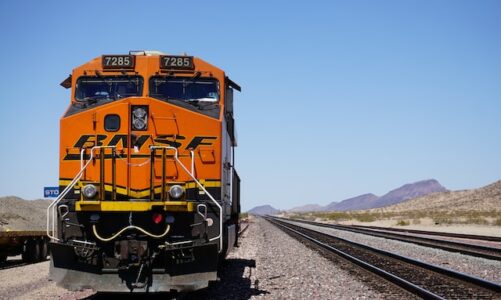The maintenance of railroad infrastructure is critical to ensuring the safety, efficiency, and reliability of transportation systems worldwide. Traditionally, this process involved manual inspections, routine track repairs, and frequent maintenance of various rail components. However, as technology continues to evolve, the railroad industry is beginning to embrace innovative solutions to streamline these processes. Drones and robotics have emerged as powerful tools in transforming railroad maintenance, offering enhanced precision, efficiency, and safety. By integrating these technologies, railroad companies can conduct inspections more quickly and accurately, address maintenance needs proactively, and reduce the risks associated with manual labor in potentially hazardous environments.
The use of drones and robotics in railroad maintenance is not only improving operational efficiency but also changing the way data is collected and analyzed. Drones equipped with high-resolution cameras, thermal imaging, and LiDAR sensors can perform aerial inspections of tracks, bridges, and tunnels, capturing detailed information that would be time-consuming and dangerous for human workers to obtain. Meanwhile, robots are being employed for tasks ranging from track inspection to automated repairs, helping to reduce downtime and prevent costly disruptions. As the railroad industry continues to face growing demands for safety and reliability, the integration of drones and robotics presents a future of smarter, more sustainable maintenance practices that can keep rail networks running smoothly and efficiently.
Overview about Drones and Robotics
Drones and robotics are revolutionizing industries by automating tasks, increasing efficiency, and improving safety. Drones, or unmanned aerial vehicles (UAVs), are versatile machines equipped with sensors, cameras, and GPS, enabling them to perform a wide range of functions such as capturing high-resolution imagery, monitoring environmental conditions, and gathering real-time data. Their ability to access hard-to-reach areas has made them invaluable in sectors like agriculture, construction, logistics, and surveillance.
Robotics, which involves designing machines that can operate autonomously or with minimal human input, is transforming industries that require precision, consistency, and safety. Robots are commonly used in environments that are hazardous or repetitive for humans, such as manufacturing, healthcare, and space exploration. The integration of drones and robotics is pushing the boundaries of automation, creating smarter systems that enhance productivity, reduce costs, and improve safety across a variety of fields, including railroad maintenance.
Key Uses of Drones and Robotics
- Drones: Used for aerial imaging, environmental monitoring, and data collection in agriculture, construction, logistics, and surveillance.
- Robotics: Employed in manufacturing, healthcare, and hazardous environments to perform complex tasks with precision and consistency.
- Integration: Combining drones and robotics for smarter, more efficient automation systems, improving productivity, safety, and cost-effectiveness.
Role of Using Drones and Robotics in Railroad Maintenance
The use of drones and robotics in railroad maintenance is revolutionizing the way rail networks are managed and maintained, offering numerous benefits in terms of efficiency, safety, and cost-effectiveness. Drones are increasingly being deployed for track inspections, allowing for the rapid collection of high-resolution images and data from hard-to-reach areas, such as elevated tracks, bridges, and tunnels. Equipped with cameras, thermal sensors, and LiDAR technology, drones can detect potential issues such as cracks, heat signatures, or structural degradation that may not be visible during manual inspections. This aerial surveillance capability enables railroad operators to identify maintenance needs more proactively, reducing the risk of costly disruptions and enhancing the safety of the rail network.
Robotics also plays a crucial role in automating maintenance tasks, further improving the efficiency of railroad operations. Robotic systems are being used for a variety of applications, from automated track inspections to repairs and cleaning. For example, robots designed for track maintenance can perform tasks such as rail grinding, track alignment, and even replacing worn-out components, all while operating autonomously or under minimal human supervision. These robots are not only capable of working in hazardous environments where human workers may be exposed to danger but can also perform repetitive tasks with precision and speed, reducing the time and labor required for maintenance. The combined use of drones and robotics is transforming railroad maintenance into a more streamlined, cost-efficient, and safer process, offering long-term benefits for the industry.
Benefits of Drones and Robotics in Railroad Maintenance
The integration of drones and robotics into railroad maintenance brings a wide range of benefits, significantly enhancing the efficiency, safety, and cost-effectiveness of maintenance operations.
Improved Safety
Drones and robotics play a critical role in enhancing safety by performing high-altitude or hard-to-reach inspections, such as checking bridges, tunnels, or elevated tracks. Robotics can also handle tasks in hazardous environments, like repairing tracks in extreme weather conditions or at night, reducing the need for workers to be exposed to dangerous situations.
Cost Reduction
By automating time-consuming and labor-intensive tasks, drones and robotics significantly reduce labor costs and the need for manual interventions. With rapid inspections and precise track repairs, these technologies decrease the size of maintenance crews and reduce human labor hours.
Early Issue Detection
Drones and robotics help identify maintenance issues early, preventing costly repairs and extending the lifespan of rail infrastructure. This proactive approach minimizes the likelihood of unexpected breakdowns and ensures the longevity of rail networks.
Operational Efficiency
Real-time data collection from drones enables faster decision-making and more targeted interventions. This improves operational efficiency by allowing for more proactive and well-planned maintenance schedules, which ultimately reduce unplanned downtime.
Increased Reliability
The use of drones and robotics leads to increased reliability in rail systems. Their ability to identify issues early and optimize maintenance schedules helps prevent disruptions, ensuring rail networks run smoothly and consistently.
Conclusion
The integration of drones and robotics into railroad maintenance represents a transformative shift in how rail networks are managed and maintained. These technologies offer significant benefits, including improved safety by reducing the need for human workers to perform hazardous tasks, enhanced operational efficiency through real-time data collection and automation, and substantial cost savings by streamlining maintenance processes. As drones and robotics continue to evolve, their role in the railroad industry will only grow, helping to create smarter, more sustainable maintenance practices. By embracing these innovations, the railroad sector can improve the reliability and longevity of its infrastructure, ensuring that rail networks remain safe and efficient for years to come. The future of railroad maintenance is undoubtedly shaped by these technologies, paving the way for safer, faster, and more cost-effective operations.



